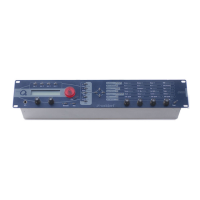Sound Parameters – Envelopes Section
109 Waldorf microQ User´s Manual
ADSR Envelope
Most traditional synthesizers feature ADSR envelopes. These envelopes are made up of four
parameters that determine their response: Attack, Decay, Sustain and Release. The other
parameters of the Envelope section have no function, so they can not be edited. The following picture
illustrates the structure of an ADSR envelope:
Attack Decay
Sustain
Release
Key pressed Key released
Time
Level
100%
Picture 31: ADSR Envelope
The envelope is started by pressing a key. It ascends to its maximum value at the rate determined by
the Attack parameter. It then descends at the rate determined by the Decay value until it reaches the
predetermined Sustain value. It remains at this value until the key is released. The envelope then
descends to zero at the rate determined by the Release parameter.
Attack 0…127
Determines the attack rate or amount of time it takes for a signal to go from zero to maximum level.
Decay 0…127
Determines the decay rate or amount of time it takes for a signal to reach the Sustain level.
Sustain 0…127
Determines the sustain level which is held until a note ends.
Release 0…127
Once the note has ended, the release phase begins. During this phase, the envelope fades to zero at
the rate determined by the Release value.

